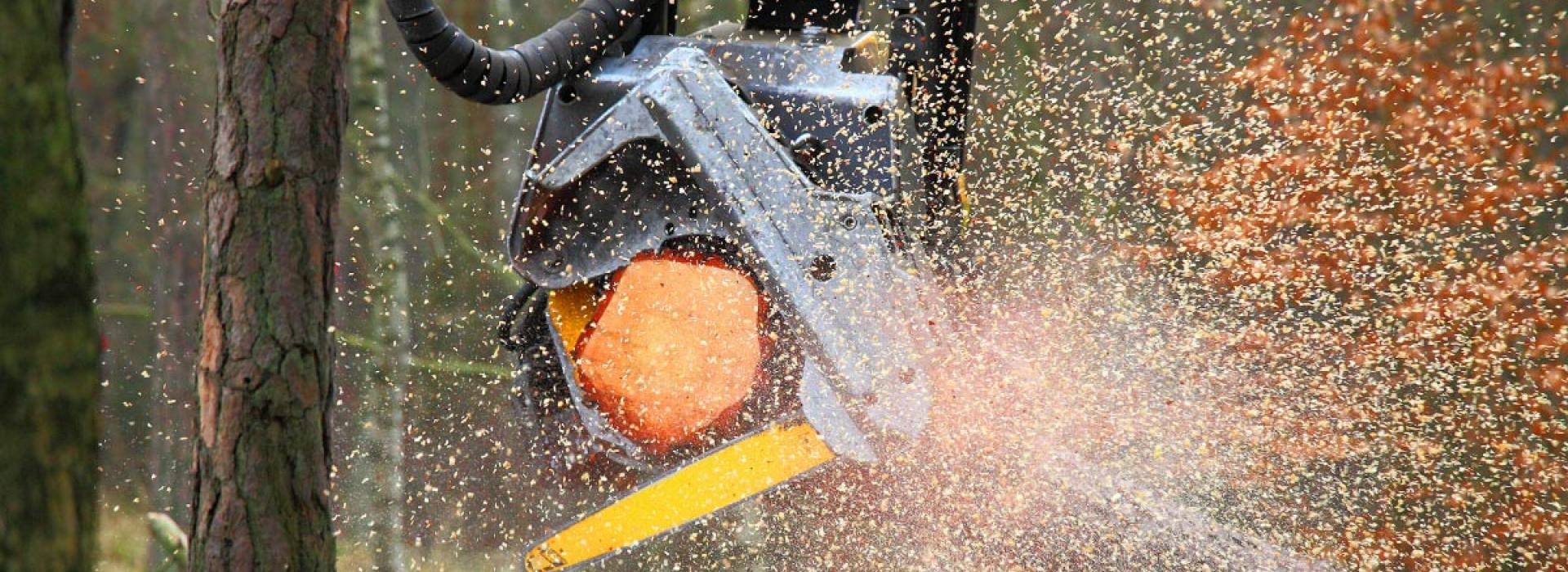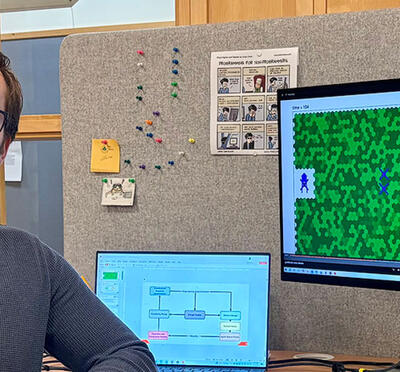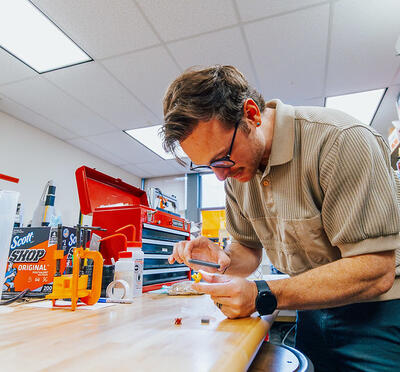Listen to a podcast version of this story on Engineering Out Loud.
Researchers at Oregon State University are partnering with Blount International—a company that manufactures saw chains and other equipment for the forestry, agriculture, and construction industries—to help make timber harvesting safer.
Led by John Parmigiani, associate professor of mechanical engineering, the team aims to understand what happens when saw chains break on large timber harvesters.
Timber harvesters look similar to an excavator you might see on a construction site, but instead of a shovel, they have an extendable boom fitted with a large chainsaw and clamp. From the cab of the harvester, an operator controls the boom to grab a tree at its base and cut it off just three or four inches from the ground.
“In the span of 30 seconds, it can take a 100-foot Douglas Fir from standing to 30 or 40-foot logs that can then be loaded onto a truck and taken away,” says Nathan Frechen, a product design engineer in Blount’s forestry product design group.
Occasionally, the saw can run into a rock or piece of equipment, breaking the chain. When this happens, the broken chain can whip out with enough force that a secondary break may occur, potentially sending a short section of chain through the air at speeds exceeding 300 meters per second if not blocked by protective guarding.
These phenomena are rare, but present the potential for serious injury, and Blount is determined to work towards understanding the factors that can lead to their occurrence, and make improvements wherever possible. To do that, they first need to understand exactly what happens when a chain breaks under these circumstances.
Blount reached out to Oregon State to help them figure that out.
“The parameters of the project required that we have a fairly heavy dose of high-level analytical engineering as well as a very capable group of people designing the actual test fixture itself, which seemed to be very well-suited to the OSU [College of Engineering],” said Mike Harfst, director of engineering for Blount’s forestry product design group.

Parmigiani and his group of graduate and undergraduate researchers set out to build an apparatus to simulate a chain break that would eventually be located at Blount’s testing facility.
“We wanted to have an automated test that would be able to simulate those incidents and allow Blount to continue developing safer products for sale in the marketplace,” said Parmigiani. “We designed it so that it used the same components—the same bars, the same chains, the same sprockets – that are used in the field and attached to the machine.”
What they made is a remotely-operated chainsaw inside a shipping container along with various instruments and a high-speed camera. The chain is propelled around a bar until it reaches the desired speed, and then a metal pin is driven into it causing it stop suddenly and break, sending a section of chain through the air where it embeds into the thick plastic walls of the container. The instrument and camera capture data that can them be analyzed. Of course no one is inside the test chamber when the test is conducted. The finished test fixture was shipped to Blount in late 2017 and now resides in their Portland facility.
“We’ll be using [the data collected] to further advance our understanding of the chain-shot phenomenon, then using that to continue developing products,” said Harfst. “We would anticipate that within a couple of years, we will have moved the bar for what constitutes state-of-the-art with these products, which as I said before, is all oriented towards safety.”
“These projects have been great for my research group and for Oregon State,” Parmigiani said. “It’s a way for students to both work on a real-world engineering problem, and really have to take it through to the point it works, but also interacting with the practicing engineers in industry.”




